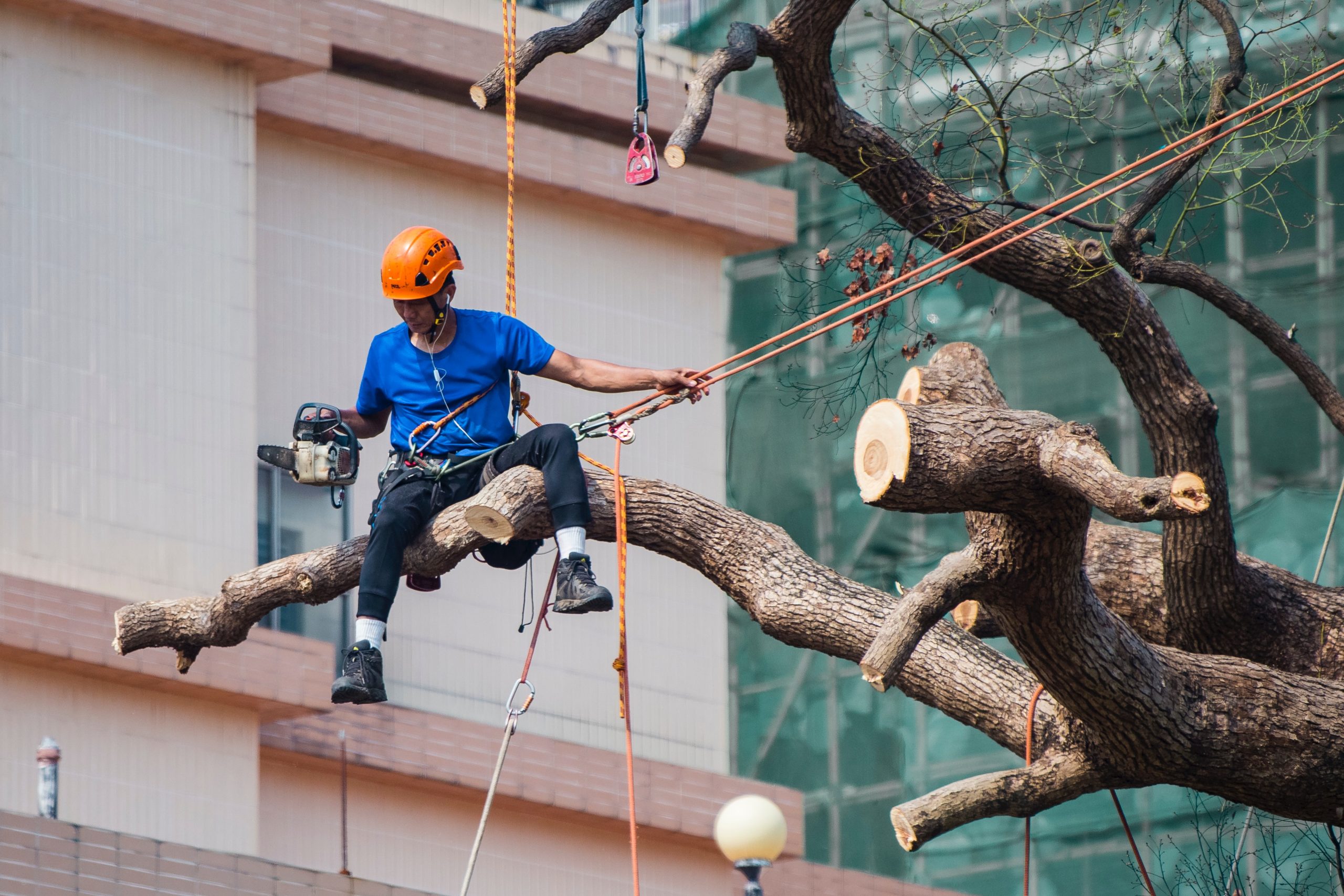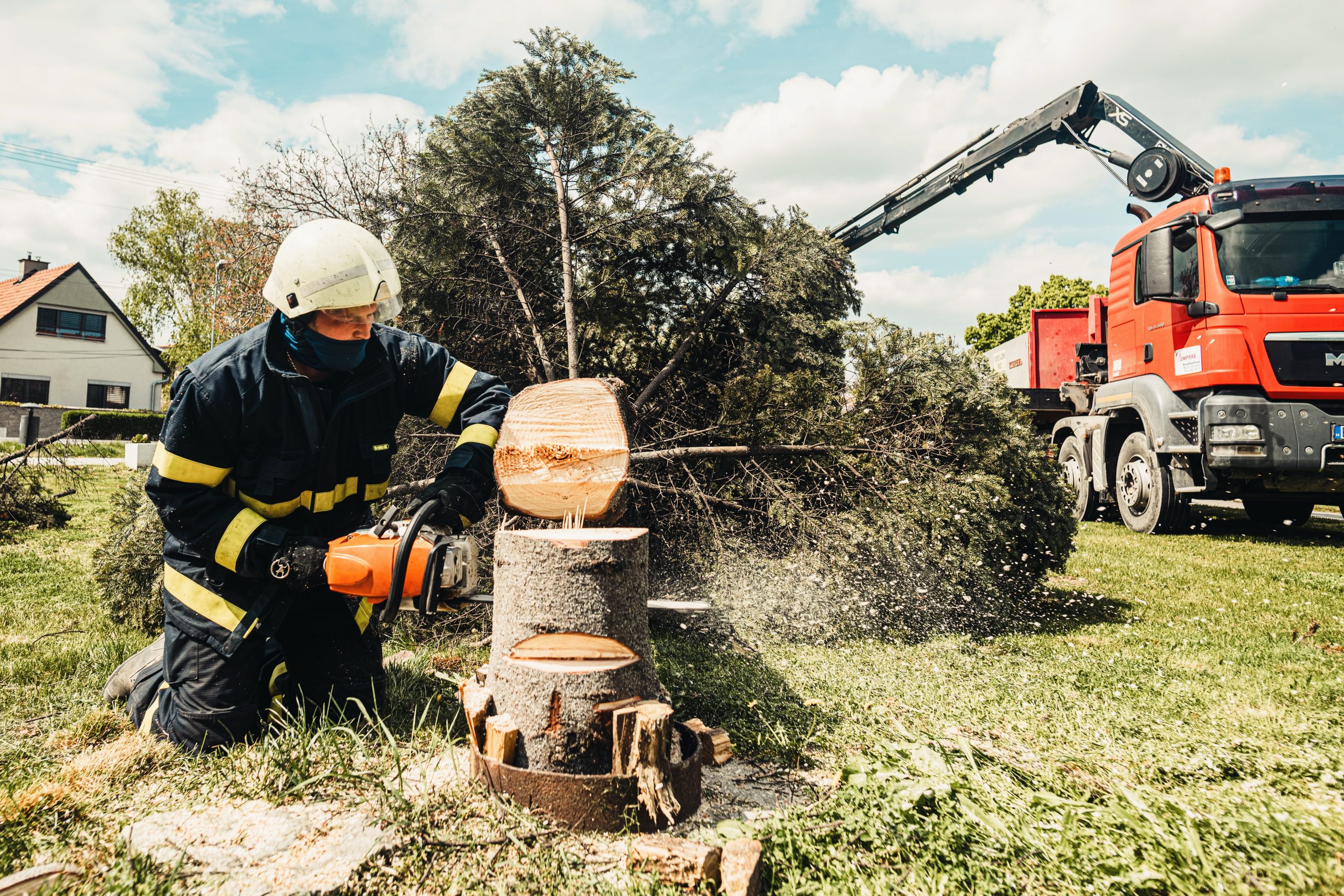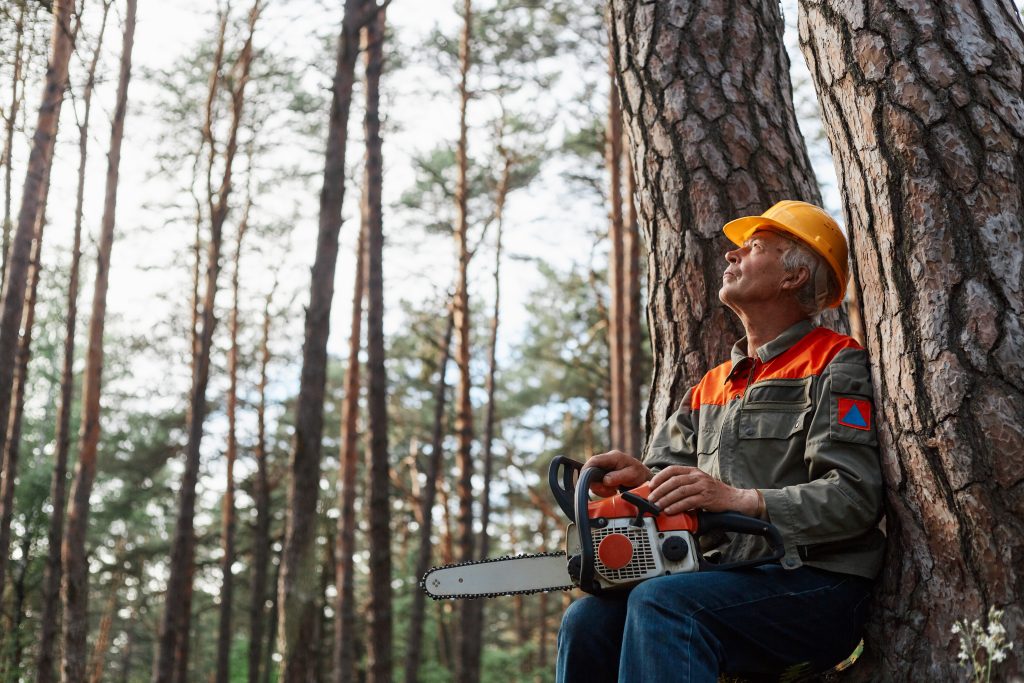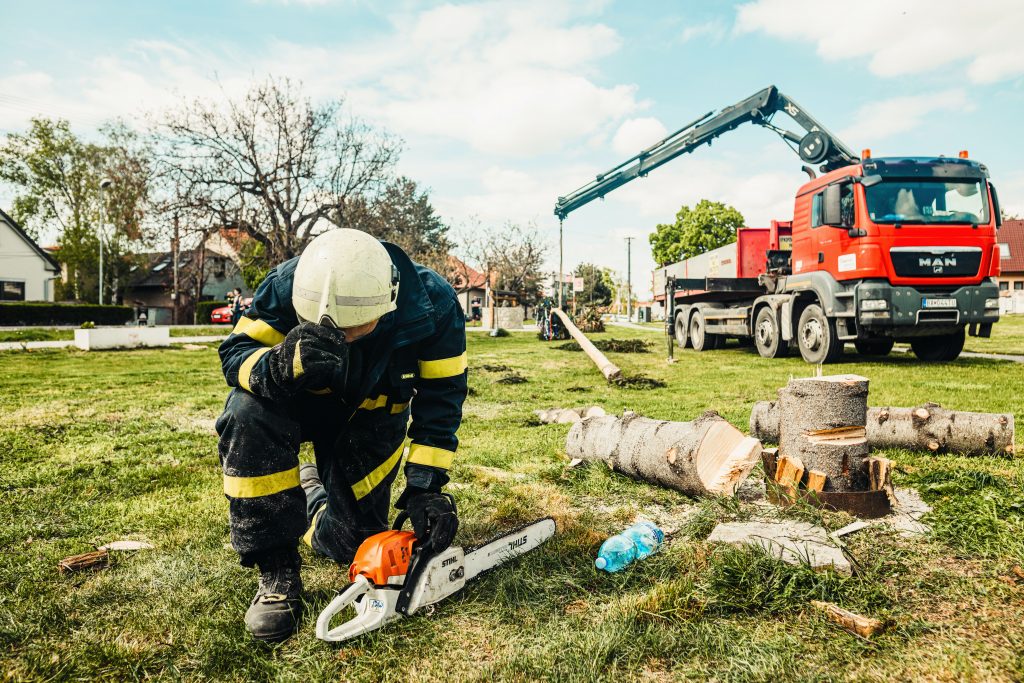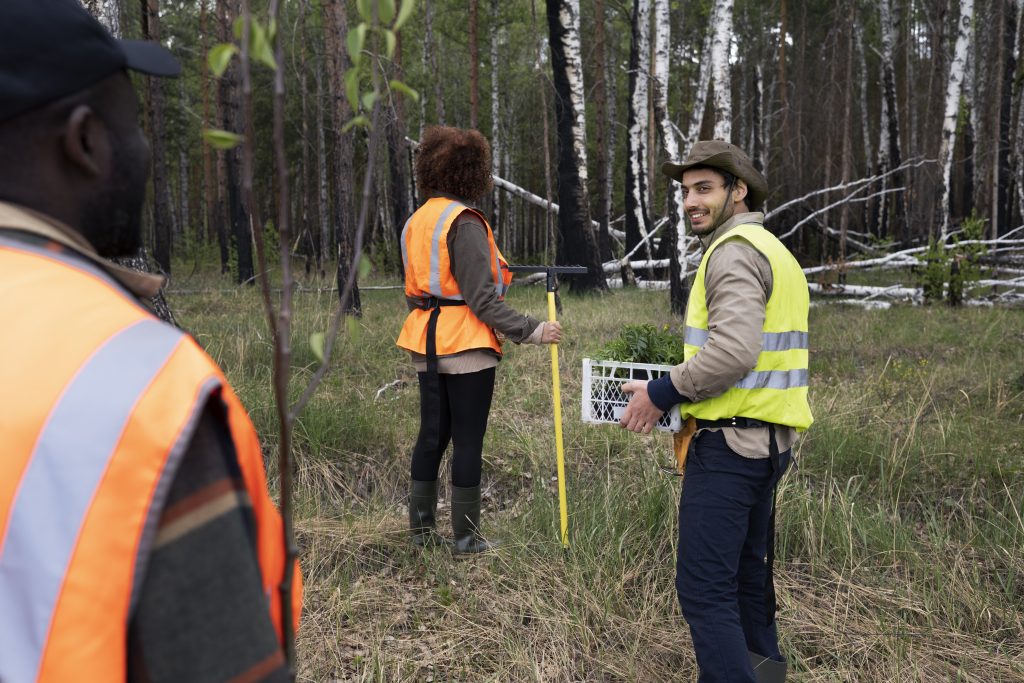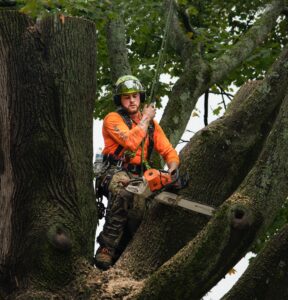COMMON QUESTIONS ABOUT RESIDENTIAL TREE PLANTING SERVICES
COMMON QUESTIONS ABOUT RESIDENTIAL TREE PLANTING SERVICES
Trees play a crucial role in commercial landscapes, offering a wide range of benefits that can positively impact businesses and the environment. Here’s an explanation of the importance of trees in commercial landscapes:
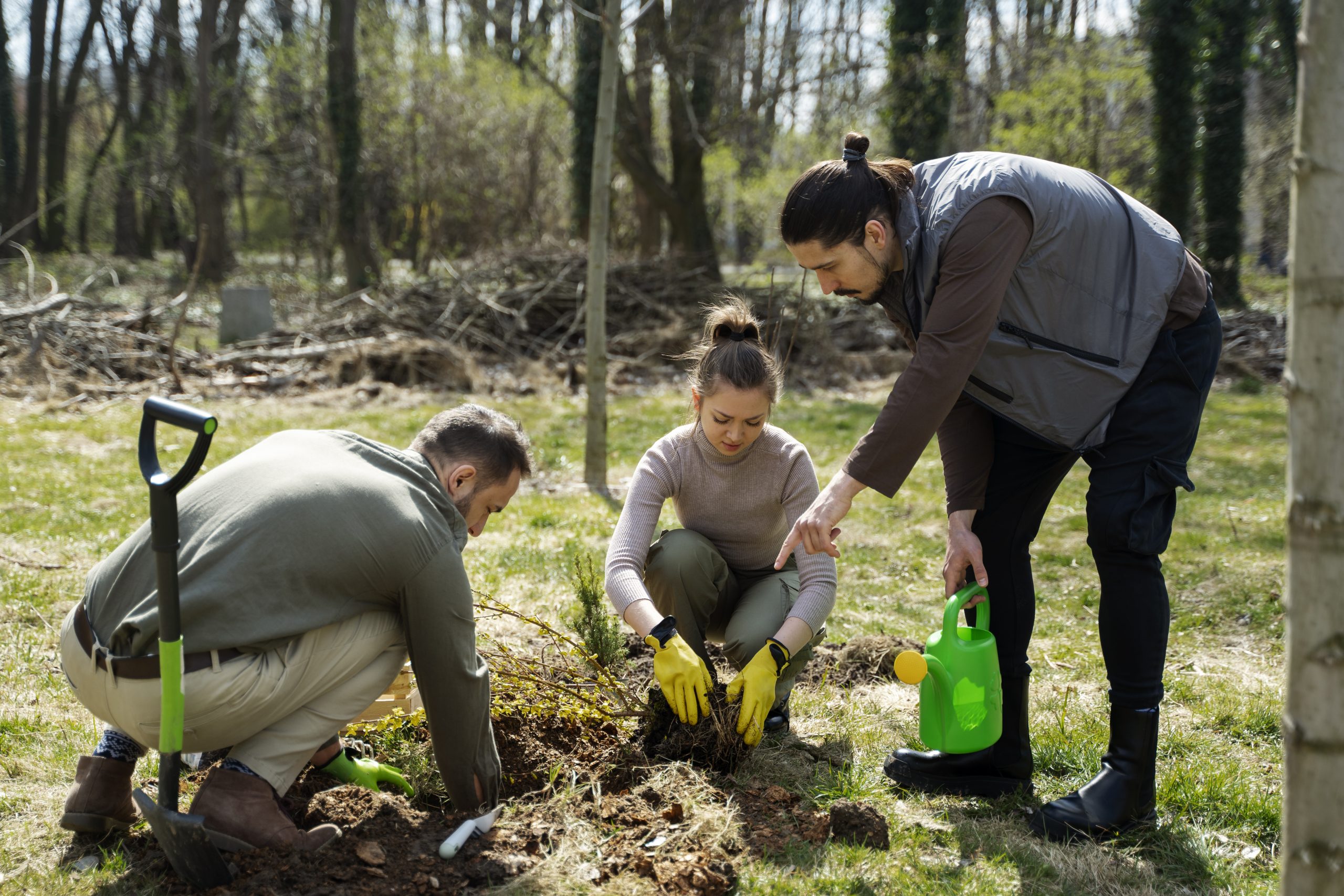
- Aesthetic Appeal: Trees enhance the visual appeal of commercial properties. They provide a natural and attractive backdrop, making a property more inviting to customers, clients, and employees. A well-landscaped environment creates a positive first impression, which can influence business relationships and customer satisfaction.
- Branding and Identity: For businesses, trees can be a part of their branding and identity. A beautifully landscaped property can reinforce a company’s commitment to quality, sustainability, and a pleasant working environment, aligning with their brand image.
- Improved Employee Morale: Trees and green spaces in commercial landscapes offer employees a more pleasant and peaceful environment. Exposure to nature during breaks can reduce stress, increase job satisfaction, and boost overall employee morale and productivity.
- Energy Efficiency: Properly placed trees provide shade during hot summer months, reducing the need for air conditioning and cooling costs. In winter, they act as windbreaks, helping to lower heating expenses. This leads to energy cost savings for businesses.
- Noise Reduction: Trees can serve as natural noise barriers, absorbing and deflecting sound. In noisy urban or industrial areas, trees can help create a quieter and more comfortable work environment, improving employee concentration and well-being.
- Privacy: Trees can be strategically planted to enhance privacy for commercial properties. They can shield outdoor spaces, meeting areas, and parking lots from the view of neighboring properties or busy streets, providing a sense of seclusion and security.
- Increased Property Value: Commercial properties with well-maintained landscapes and mature trees often command higher resale or rental values. Trees contribute to property aesthetics and can be a valuable asset for investors.
- Environmental Responsibility: Businesses are increasingly expected to demonstrate environmental responsibility. Trees in commercial landscapes contribute to carbon sequestration, air purification, and overall environmental sustainability, aligning with green initiatives and corporate social responsibility goals.
- Attracting Customers: A beautifully landscaped commercial property with trees can attract more customers. People are drawn to establishments with outdoor seating, green spaces, or aesthetically pleasing surroundings, potentially increasing foot traffic and revenue.
- Community Engagement: Commercial properties that invest in landscaping and tree planting can engage with the local community. Hosting outdoor events, fundraisers, or environmental education programs in green spaces can foster positive relationships and community involvement.
- Mitigating Urban Heat Islands: In urban areas, trees help reduce the urban heat island effect by providing shade and cooling. This creates a more comfortable and attractive environment for customers and employees.
- Biodiversity Support: Trees in commercial landscapes can support biodiversity by providing habitat for birds, insects, and other wildlife. This can contribute to local ecosystem health and create opportunities for educational or conservation initiatives.
Trees in commercial landscapes offer numerous advantages, including improved aesthetics, energy efficiency, employee well-being, increased property value, and environmental benefits. Investing in trees and green spaces can have a positive impact on a business’s bottom line, brand reputation, and its contribution to the community and environment.
Benefits of Professional Tree Planting Services
Professional tree planting services offer several benefits that can significantly enhance the success and health of trees in various settings, including residential, commercial, and environmental restoration projects. Here are some of the key benefits of using professional tree planting services:
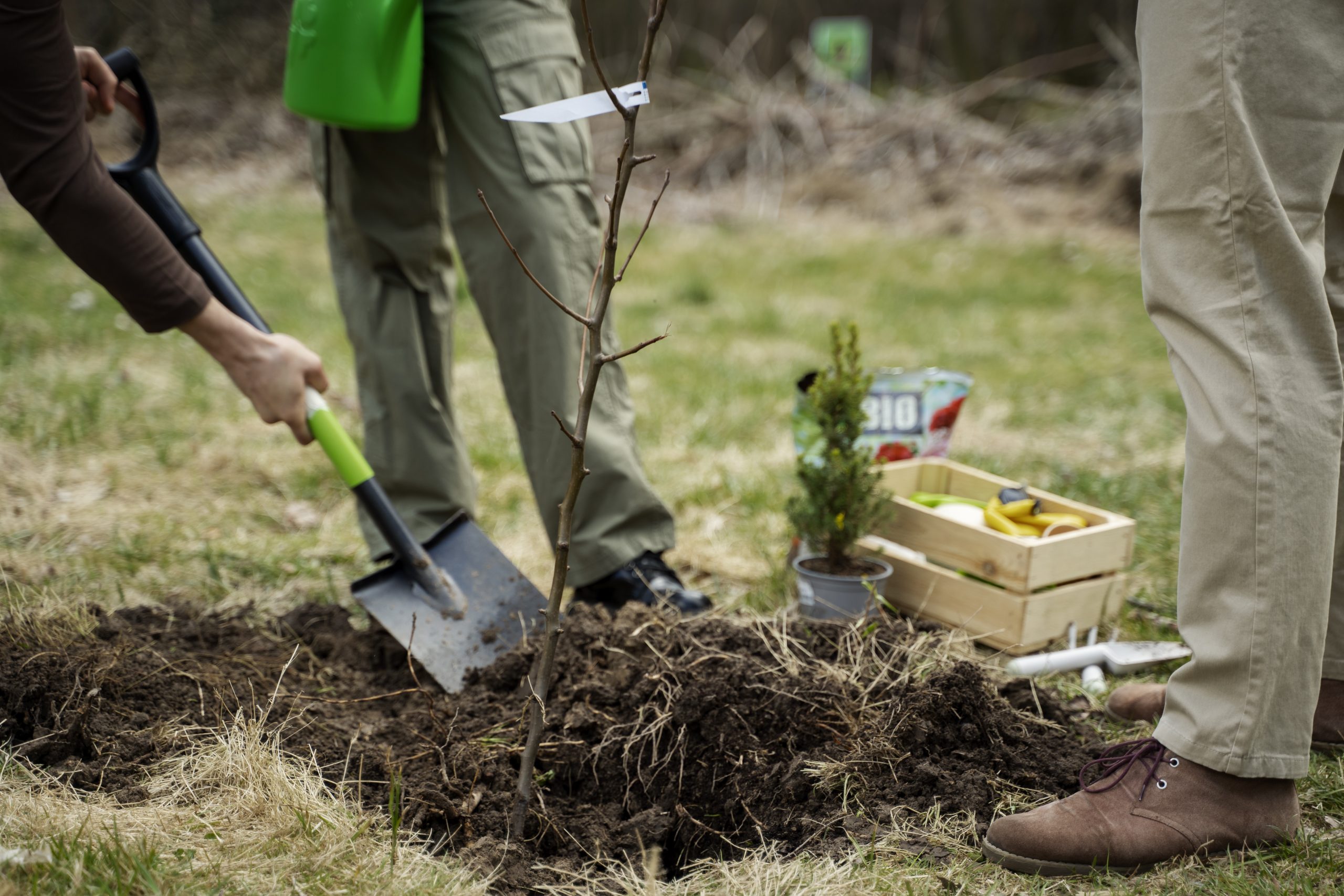
- Expertise and Knowledge: Arborists and tree planting professionals have the expertise and knowledge required to select the right tree species for a specific location. They consider factors such as soil type, climate, local environmental conditions, and long-term growth potential to make informed decisions.
- Site Assessment: Professionals conduct thorough site assessments to determine the suitability of the location for tree planting. This includes evaluating soil quality, drainage, sunlight exposure, and potential hazards (e.g., utility lines) to ensure optimal tree growth.
- Proper Planting Techniques: Professionals follow industry best practices for tree planting. This includes correctly digging planting holes, addressing root ball issues, adding necessary soil amendments, and providing proper mulching to promote healthy root development and tree growth.
- Selection of Healthy Trees: Professionals source healthy, disease-free, and well-maintained trees from reputable nurseries. They inspect trees for any signs of disease, pests, or root damage before planting, ensuring that only high-quality specimens are used.
- Tree Health and Maintenance: Professional tree planting services often include ongoing maintenance, such as pruning, watering, and fertilization, to support the health and vitality of newly planted trees. Regular care helps trees establish strong root systems and thrive.
- Disease and Pest Management: Professionals are trained to identify and address common tree diseases and pest infestations promptly. Early intervention can prevent the spread of problems and minimize damage to the tree.
- Compliance with Local Regulations: Tree planting professionals are familiar with local tree ordinances and regulations. They ensure that all necessary permits and approvals are obtained before planting and that trees are planted in accordance with local guidelines.
- Efficiency and Timeliness: Professional services are often more efficient and timely in their planting efforts. They have the necessary equipment, tools, and personnel to complete planting projects quickly and effectively.
- Cost-Effective: While professional tree planting services come at a cost, they can be cost-effective in the long run. Properly planted and maintained trees are more likely to establish themselves successfully, reducing the need for costly replacements.
- Insurance and Liability: Reputable tree planting services carry liability insurance, which provides protection in case of property damage or injuries during the planting process. This coverage can mitigate risks for property owners.
- Environmental Benefits: Professional tree planting services can help select and plant native or environmentally significant tree species, contributing to local biodiversity and ecosystem health.
- Aesthetics and Property Value: Trees planted by professionals are more likely to thrive and enhance the aesthetics of the property. Well-maintained landscapes with healthy trees can increase property value and curb appeal.
- Sustainability and Longevity: Professional tree planting promotes sustainability by ensuring that trees are planted in the right places and under optimal conditions. This can lead to the longevity of trees, which can provide benefits for generations.
Professional tree planting services offer expertise, quality assurance, and long-term benefits for tree planting projects. They contribute to the health and success of trees, mitigate risks, and help property owners achieve their aesthetic, environmental, and functional goals.
Factors To Consider When Selecting Tree Species
Selecting the right tree species for planting is a critical decision that depends on several factors, including the specific site conditions and the desired outcomes for the tree. Here are some key factors to consider when selecting tree species:
- Climate: The local climate plays a significant role in determining which tree species will thrive in a particular area. Consider factors such as temperature ranges, frost dates, rainfall patterns, and humidity levels. Different tree species have varying cold hardiness and drought tolerance.
- Hardiness Zone: Determine the hardiness zone of your location, which provides information about the average minimum winter temperatures. Choose tree species that are well-suited to your hardiness zone to ensure they can withstand local weather conditions.
- Soil Type: Soil composition, texture, and pH levels are essential factors. Some tree species thrive in well-draining sandy soils, while others prefer clay or loam. Conduct a soil test to understand your soil’s characteristics and select trees that are compatible with those conditions.
- Sunlight Exposure: Assess the amount of sunlight the planting site receives throughout the day. Some trees require full sun, while others can tolerate partial or full shade. Choose a tree species that matches the site’s light conditions.
- Space and Size: Consider the available space for the tree to grow both aboveground and belowground. Some trees grow tall and wide, while others have a more upright or compact growth habit. Ensure that the chosen species can fit comfortably in the designated space without overcrowding.
- Purpose: Determine the primary purpose of planting the tree. Are you looking for shade, ornamental value, windbreak, privacy, or fruit production? Different tree species are better suited for specific purposes.
- Local Ecosystem: Consider the existing ecosystem and native species in your area. Planting native trees can support local wildlife and contribute to biodiversity. These trees are often well-adapted to the local environment.
- Maintenance Requirements: Evaluate your willingness and ability to provide ongoing maintenance for the tree. Some species may require regular pruning, pest control, or special care, while others are low-maintenance.
- Disease and Pest Resistance: Research common diseases and pests in your area and choose tree species that are resistant or less susceptible to these issues. This can help reduce the need for chemical treatments.
- Allergies: Be mindful of potential allergenic tree species, especially in urban or residential areas. Some trees release pollen that can trigger allergies, so consider the impact on nearby residents.
- Aesthetic Considerations: Think about the tree’s appearance, including its size, shape, foliage color, and seasonal interest. Choose a species that aligns with your aesthetic preferences and complements the landscape.
- Local Regulations: Check local ordinances, regulations, and restrictions related to tree planting. Some areas may have rules regarding tree species selection, planting distance from property lines, or protected species.
- Long-Term Goals: Consider the long-term goals for the tree. Some trees grow quickly but have a shorter lifespan, while others grow more slowly but live longer. Choose a species that aligns with your desired time frame.
- Availability and Accessibility: Ensure that the selected tree species are readily available from local nurseries or suppliers. Easy access to replacement trees and maintenance resources can be important.
By carefully considering these factors, you can select the most suitable tree species for your specific site and objectives, ensuring the tree’s long-term health and success. Consulting with a local arborist or tree expert can also provide valuable guidance in the selection process.
About Murray, Utah
Murray is a city situated on the Wasatch Front in the core of Salt Lake Valley in the U.S. state of Utah. Named for territorial governor Eli Murray, it is the state's fourteenth largest city. According to the 2020 census, Murray had a population of 50,637. Murray shares borders with Taylorsville, Holladay, South Salt Lake and West Jordan, Utah. Once teeming with heavy industry, Murray's industrial sector now has little trace and has been replaced by major mercantile sectors. Known for its central location in Salt Lake County, Murray has been called the Hub of Salt Lake County. Unlike most of its neighboring communities, Murray operates its own police, fire, power, water, library, and parks and recreation departments and has its own school district. While maintaining many of its own services, Murray has one of the lowest city tax rates in the state.
Neighborhoods in Murray, Utah
Murray Oakes, Grant Park, Southwood Park, Murray Park, Murray Park Restrooms, Willow Pond Park, Neighborhood Veterinary Care
Things To Do in Murray, Utah
Bus Stops in Murray, Utah to Truco Services, Inc.
Bus Stop in Murray Central Station (Bay C) Murray, Utah to Truco Services, Inc.
Bus Stop in State St @ 4801 S Murray, Utah to Truco Services, Inc.
Bus Stop in Murray North Station Murray, Utah to Truco Services, Inc.
Bus Stop in State St @ 4949 S Murray, Utah to Truco Services, Inc.
Bus Stop in Murray Central Frontrunner/Trax Station Murray, Utah to Truco Services, Inc.
Bus Stop in Murray Blvd / Vine St (SB) Murray, Utah to Truco Services, Inc.
Bus Stop in State St @ 3925 S Murray, Utah to Truco Services, Inc.
Bus Stop in State St @ 4824 S Murray, Utah to Truco Services, Inc.
Bus Stop in State St @ 5223 S Murray, Utah to Truco Services, Inc.
Bus Stop in Murray Blvd / Allendale Dr (NB) Murray, Utah to Truco Services, Inc.
Bus Stop in Murray Blvd @ 5039 S Murray, Utah to Truco Services, Inc.
Bus Stop in State St @ 4721 S Murray, Utah to Truco Services, Inc.
Driving Directions in Murray, Utah to Truco Services, Inc.
Driving Directions from Woodruff Tree Trimming and Removal to 4640 Commerce Dr, Murray, UT 84107, USA
Driving Directions from Reliable Tree Care to 4640 Commerce Dr, Murray, UT 84107, USA
Driving Directions from Tree Pro-Tech to 4640 Commerce Dr, Murray, UT 84107, USA
Driving Directions from Prestige Tree And Landscape to 4640 Commerce Dr, Murray, UT 84107, USA
Driving Directions from Excellence Tree & Landscape to 4640 Commerce Dr, Murray, UT 84107, USA
Driving Directions from Amen Trees to 4640 Commerce Dr, Murray, UT 84107, USA
Driving Directions from Tim's Tree Care to 4640 Commerce Dr, Murray, UT 84107, USA
Driving Directions from Jordan Tree Service - Murray to 4640 Commerce Dr, Murray, UT 84107, USA
Driving Directions from Arbor Works to 4640 Commerce Dr, Murray, UT 84107, USA
Driving Directions from Diamond Tree Experts to 4640 Commerce Dr, Murray, UT 84107, USA
Driving Directions from Green Tree Arborist to 4640 Commerce Dr, Murray, UT 84107, USA
Driving Directions from TruCo Services to 4640 Commerce Dr, Murray, UT 84107, USA
Reviews for Truco Services, Inc. Murray, Utah
Emily Abercrombie
We had a great experience with TruCo! They were well priced, responsive and prompt. Michael was a pleasure to work with and gave us advice on which plants to put in where we took out our ugly old shrubs. I would highly recommend this company!!!
Michelle Turpin
TruCo Services gets 5 stars from us for customer service. We experienced a few issues with their services this last year and Rob Eccles in senior management, stepped in and immediately handled our issues. He was very committed to making sure they understood our expectations and would execute to make us happy.
Siobhan Billingsley
I work for a property management company and have the pleasure of working with Rob at a community in Sandy. He has been incredible to work with and always responds in a timely manner. He knows all the homeowners by name and address and is aware of all the "problem" areas when it comes to sprinklers. I never have to worry about following up with him because he always reaches out to provide me with an update. If you're looking to work with someone who takes pride in their job, is professional, and can solve the worst landscaping problems thrown your way, Rob is your guy. Thank you, Rob for all you do!
Jaime S.
We have used Truco at 2 of the complexes we manage, they have been great to work with. Good quality service, outstanding customer service with good communication. That's hard to find these days. I highly recommend them. Travis has been awesome to work with.
Jerusha Smart
We use TruCo for a majority of our properties and our home. While other landscaping companies we use come and go for various reasons like cost, communication issues, work performance, etc., TruCo is always consistent in price and work. Also, Rob is the best.
